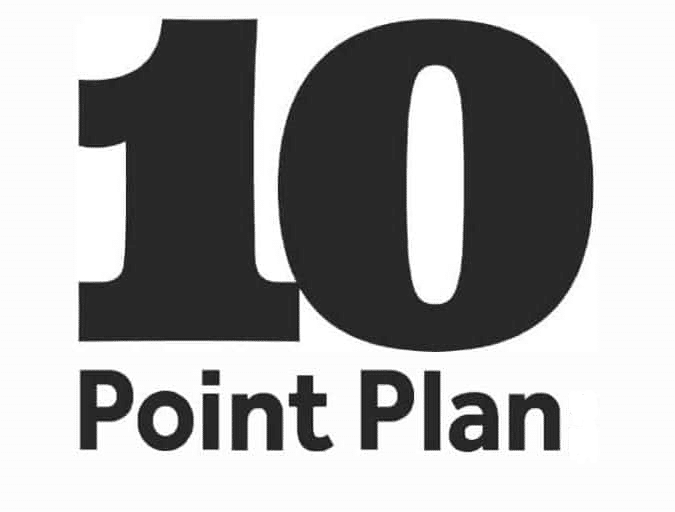Charlie Johnson, VP UK and Ireland at Digital Element, explains how to use consumers’ IP geolocation for better personalisation.
Marketers constantly strive to personalise messaging to drive engagement. Studies have even shown what kind of tailoring will produce the best results: messages that align with the classic trio of unique needs, interests, and context, and make it easier for consumers to cut through online choice.
But being all things to each global consumer is easier said than done. With growing digital touchpoints and privacy concerns running alongside demand for personalisation, marketers face a tough balancing act. What’s required is insight that helps boost real-time relevance wherever individuals are, without making them identifiable: IP geolocation data.
Here are 10 essential factors marketers must consider to harness it effectively:
1. The power of “where”
IP geolocation data is a valuable asset, enabling marketers to refine their campaigns for specific regions and get several basics right, from currency to language. But it’s when this insight is combined with other non-personally identifiable connection insight that it comes into its own. Context makes a significant difference to how individuals engage with marketing messages — at home, they might be more inclined to click and watch a video, while those on the move might prefer a less data-intensive display ad. Using detailed data about connection traits, marketers can achieve granular audience segmentation and sharper targeting that gives their messages a more positive, in-the-moment impact.
2. IP is the best insight bet
Increasing interest in geolocation has fuelled a greater choice of solutions, but insight varies. Many providers use a mix of collection methods — such as cookies, GPS, latitudinal and longitudinal information, and HTML5 — that share two key flaws: access relies on user supply, and data only covers a small patch of the web. For marketers in search of scale and precision, solutions based on IP intelligence present a simple but elegant solution. IP addresses offer a reliable way of determining where almost any web user is connected without personally identifying them.
3. Setting a path for accuracy
The potential of IP data, however, depends on accuracy. Too often, providers use publicly available registration data, which is infamously imprecise and frequently has huge coverage gaps. Marketers must therefore choose providers with care, prioritising IP solutions that use a living network of reliable and verified IP-geolocation data. The most advanced derive their information from mobile devices and billions of location-centric data points to ensure optimal coverage, while also running robust validation analysis. This includes triangulation of location data with multiple IP address characteristics, and evaluation against feedback from diverse network partners, to deliver hyperlocal and trustworthy, yet privacy-sensitive insights, right down to postcode level.
4. Prioritising data unification
Ensuring a foundation of reliable geolocation data is a good start, but value is limited if that insight can’t be integrated with internal systems. This means marketers also need to focus on usability, opting for platforms that make implementation as smooth as possible by converting global data into consistent unified formats. For instance, that might involve applying the International Standard for Organisation (ISO) across their database, while retaining country-specific consistency by comparing data to local postcodes.
5. Location isn’t everything
While identifying where consumers are is a large part of geolocation, it’s not the whole story. Tools with the ability to tap broader IP intelligence can also home in on details such as how users are connected — via public wi-fi, corporate, or home networks — as well as the internet service provider (ISP) and device type in use. In addition, the ability to gain insight into the domain names tied to a given IP address opens up a new wealth of information, such as company and organisation names, and demographics.
Armed with this insight, marketers can gain a richer contextual picture of individual habits that helps fine-tune delivery for optimal impact.
6. The crucial need for speed
Speed is integral to successful personalisation. If they want to hit the right mark for each individual, marketers must be able to instantly adapt messaging in line with real-time habits and needs — and to do that, they need hyper-efficient technology. Typically, that will involve scanning the market to find the fastest processing tools, able to reach speeds of 30,000 IP queries per second and produce immediately actionable results.
7. Keeping privacy centre focus
Navigating today’s complex data privacy landscape calls for comprehensive knowledge of how consumer information should be used. In regards to geolocation, the good news is IP addresses themselves don’t count as personally identifiable information (PII), it’s only when they are merged with other information that they become subject to regulation. But the challenge for marketers is steering clear of any geolocation solutions crossing the privacy line into PII monitoring. To be compliant, network infrastructure should be built on privacy-friendly principles: avoiding use of uniquely identifiable data, while simultaneously countering the possible inaccuracies of ISPs with additional evaluation. For example, this might include application of intelligent web-spidering technology and authenticated third-party insight to trace how web traffic is actually flowing, and where from.
8. Data value grows in numbers
IP geolocation data is often most effective as a team player, producing the best results when blended with other non PII data. For example, by combining IP insights with point of interest data, marketers can build an anonymous but detailed map of consumer routines and target advertising accordingly, serving discount codes for a frequently visited coffee shop at the time users are most likely to be passing in the morning or codes for favoured retailers as they settle down in front of the TV on a home network.
9. Tracing multi-channel connections
Just because actions are taking place in the real word doesn’t mean they can’t be linked to the digital realm. With mobile devices now integral to everyday life, IP geolocation presents a sizeable opportunity to connect the dots between digital offers and offline interactions using mobile data signals, such as visits to local stores after receiving a discount code.
10. Reputation matters
Finally, as any shopper would run one last check of reviews after doing their research, marketeers need to assess tech platform credentials. Once confident their preferred provider can offer compliant, accurate, secure, and trustworthy data, they must ensure the ultimate choice has a strong track record for delivering positive return on investment.


